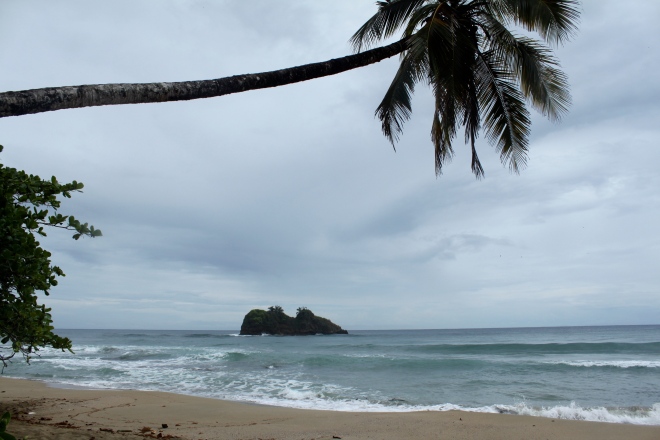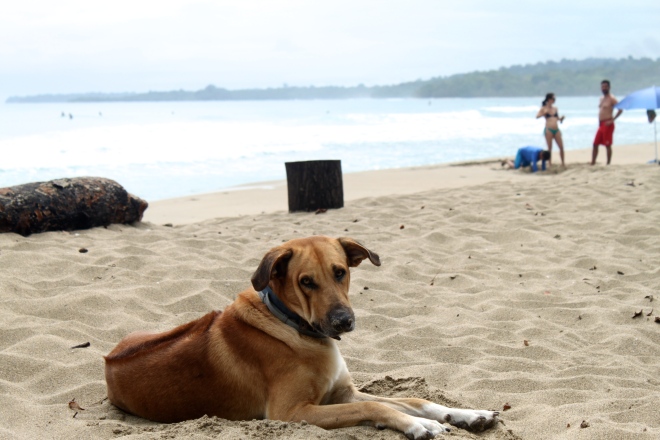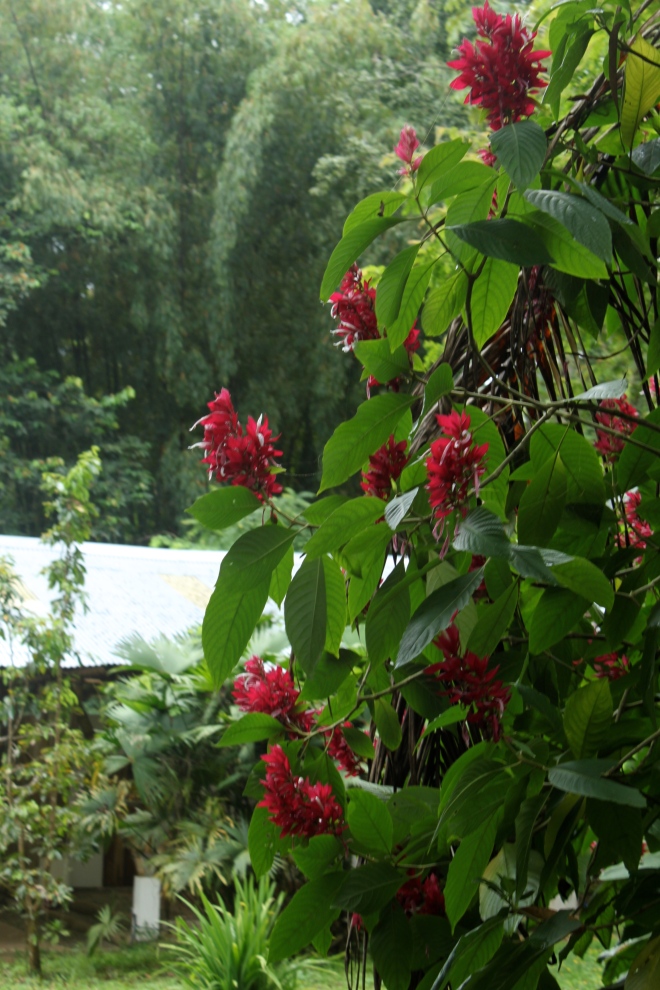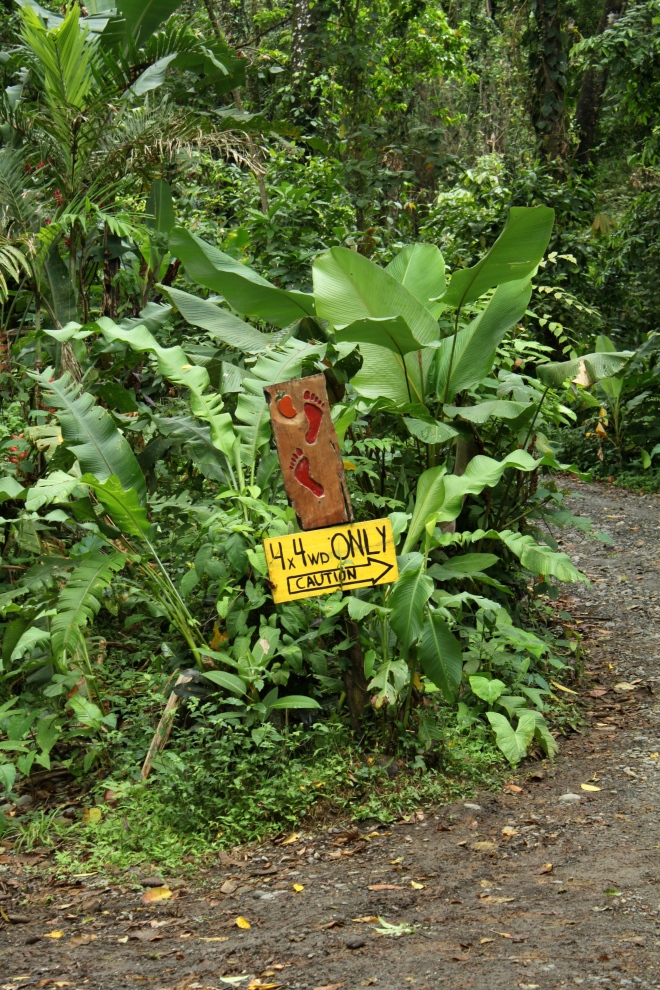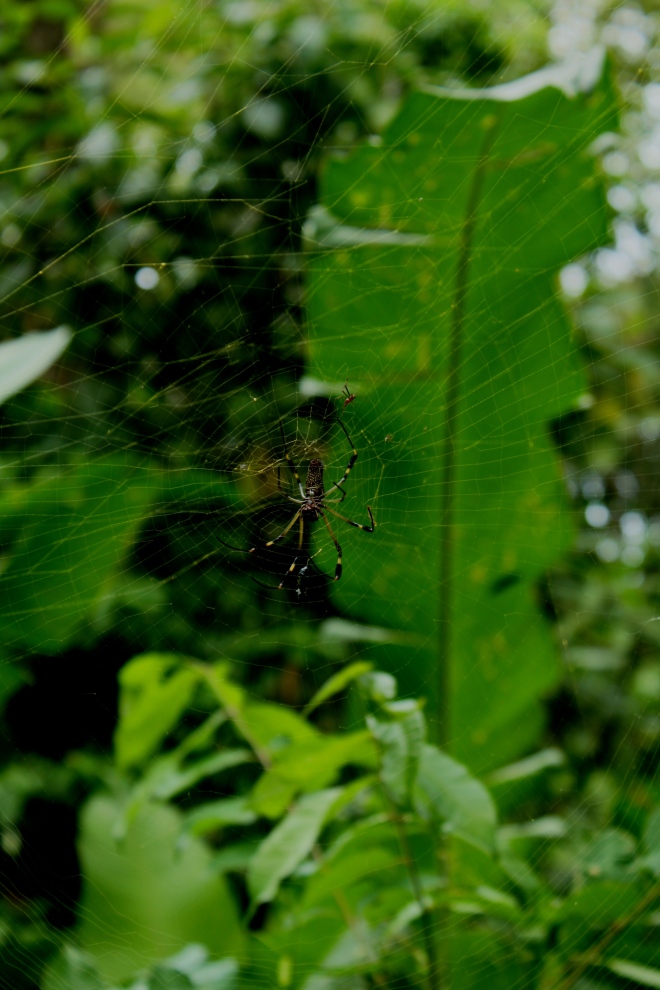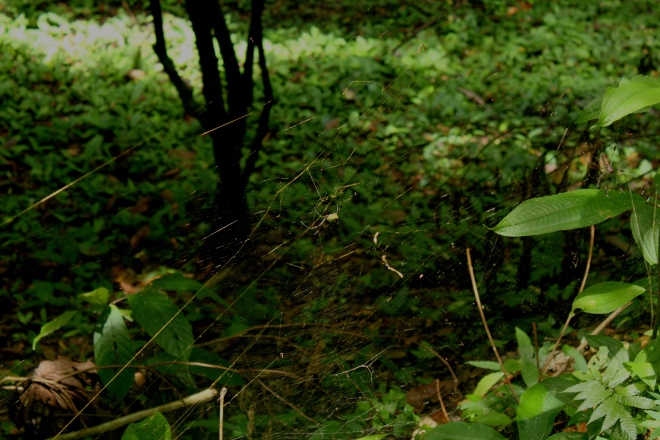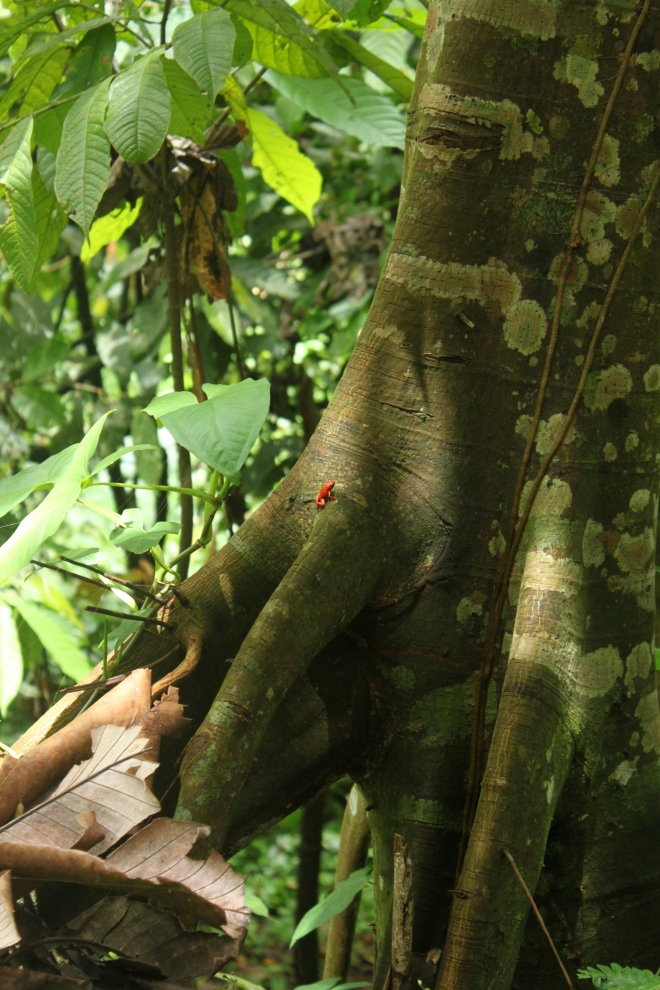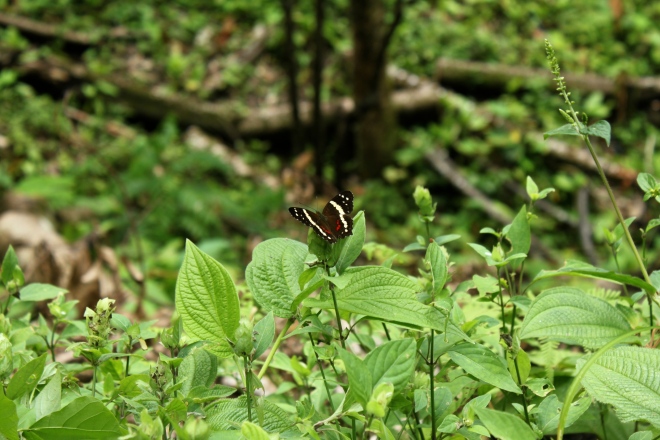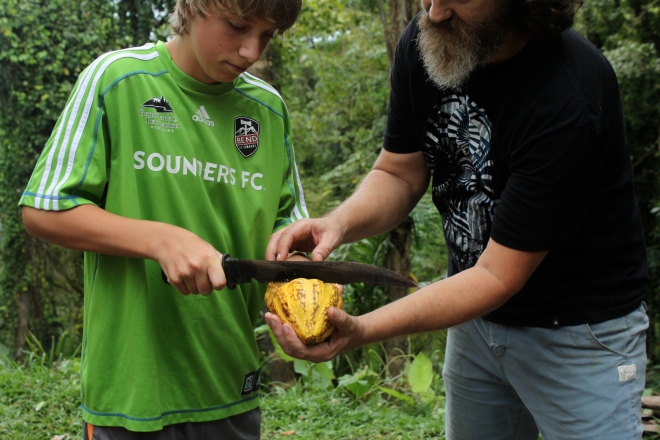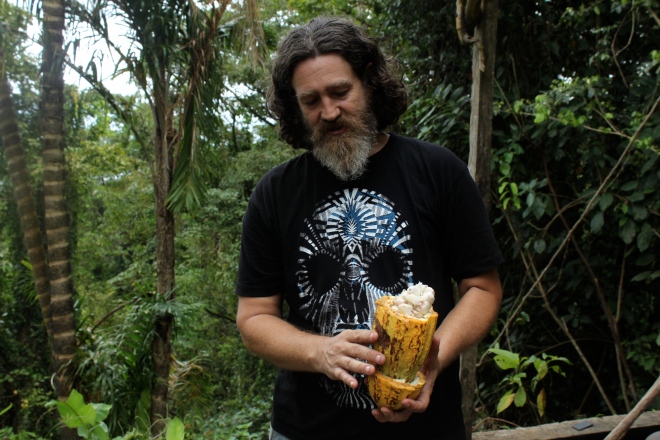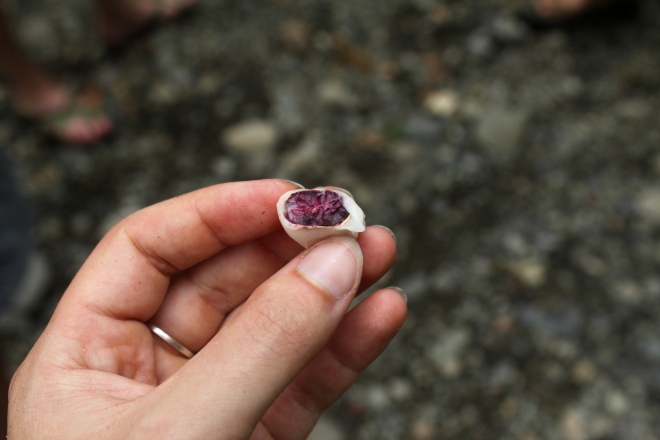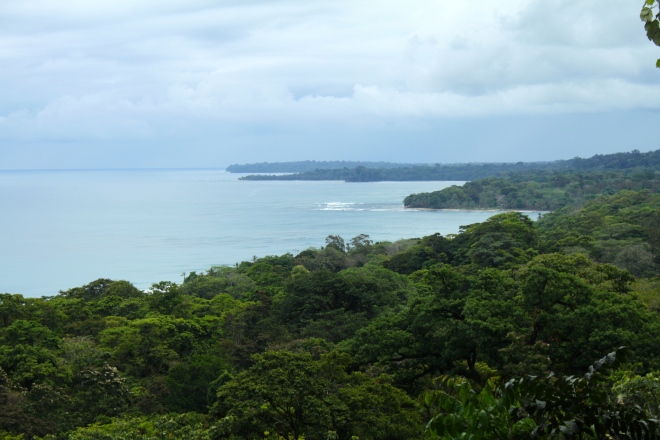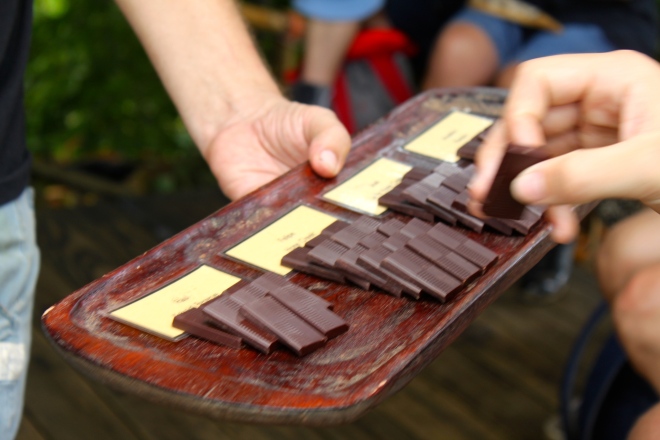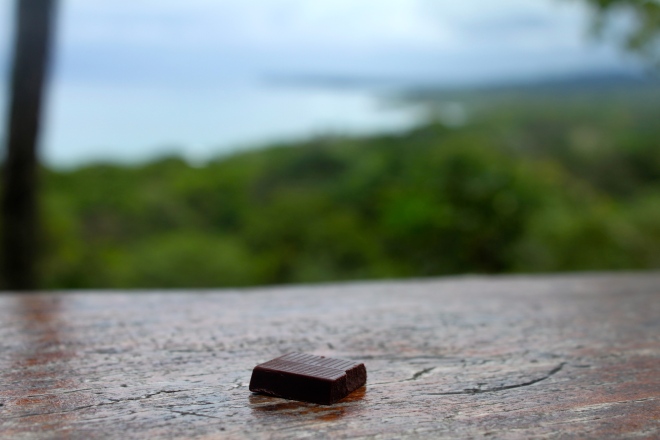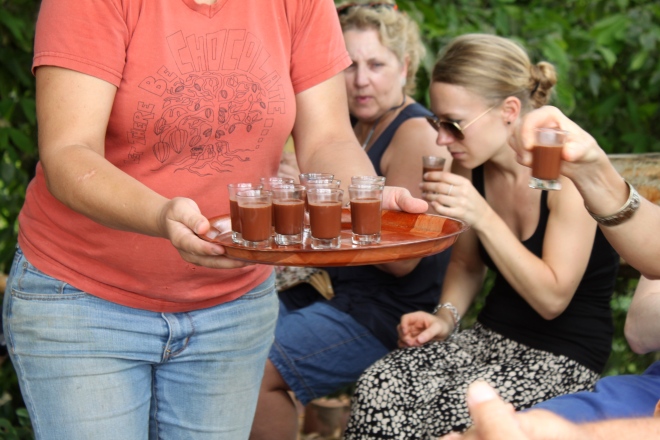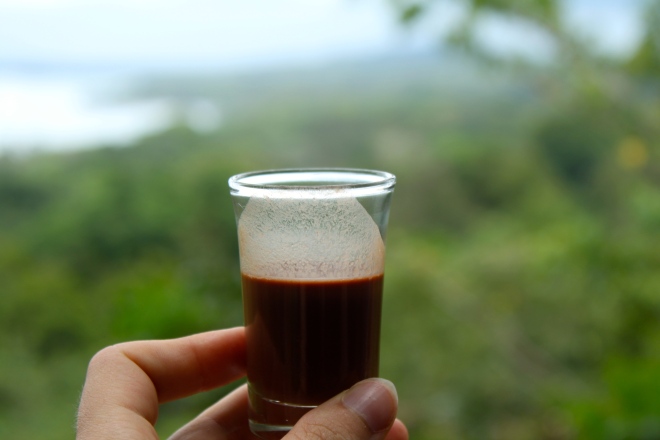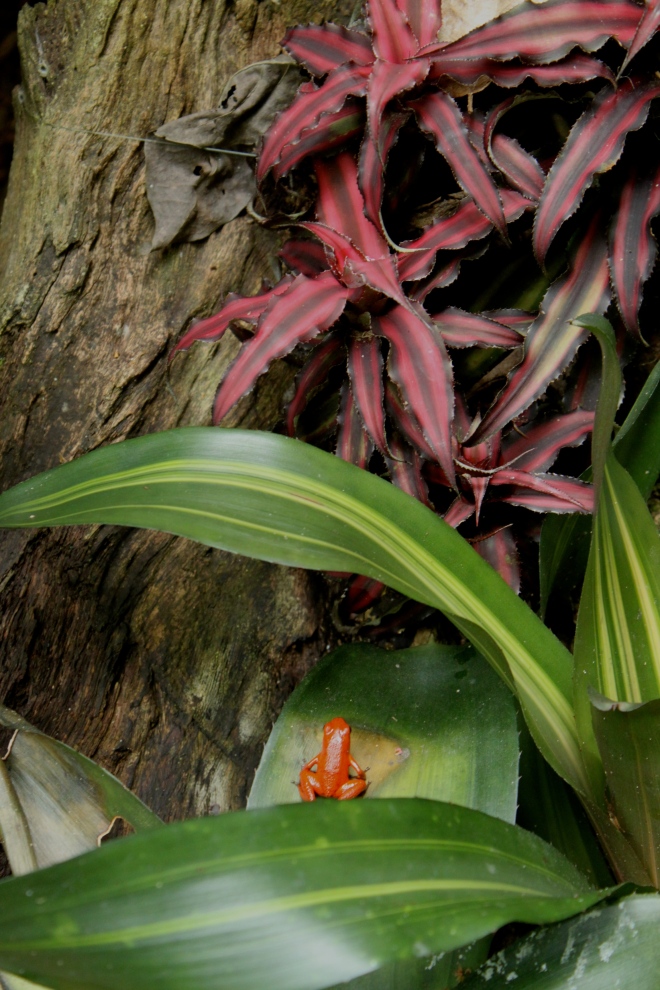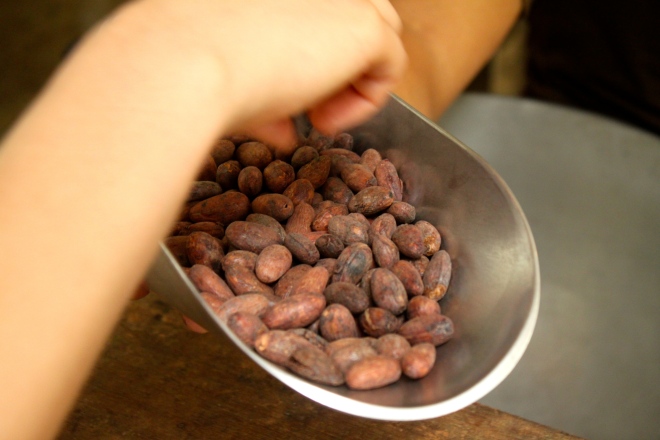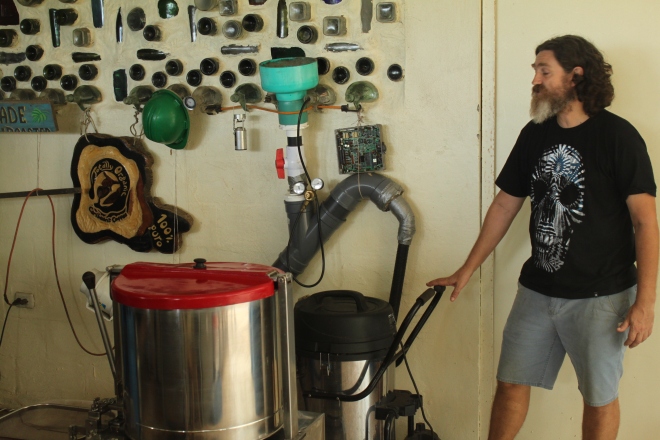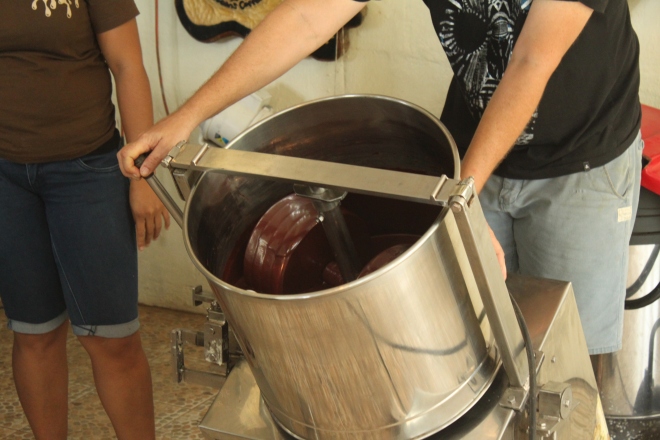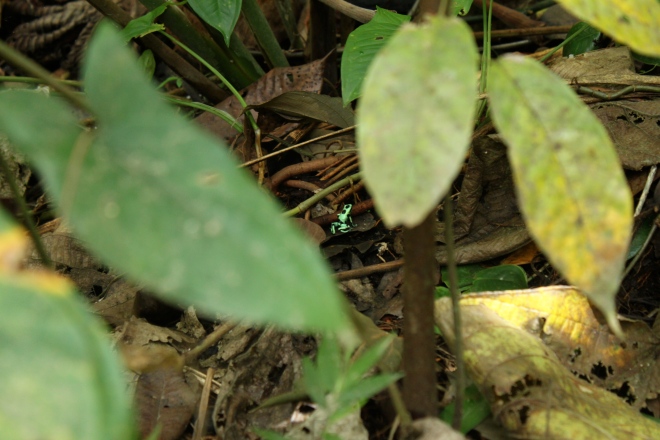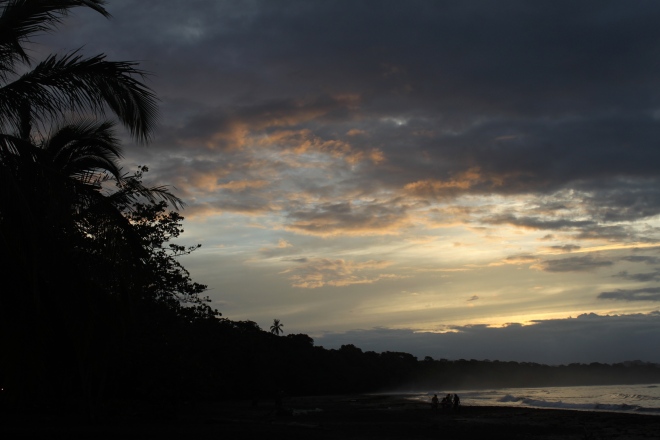Hi hi! So sorry to be out of commission for so long! It’s been a busy couple of weeks with applications and paper edits and work, but I’m back and all backed up with stories to write about! Here is one that needs little words and just a lot of imagination, since I will take you on a trip… to a cocoa forest!
It all starts in Cocles, a little beach village on the Caribbean coast of Costa Rica…
with charming views and more charming beach visitors.
But I wasn’t here for the beach, I was here for the chocolate – specifically, the cocoa forest tour of Caribeans.
Our group of 10 met at the chocolate ‘tasting lounge’ and marched into the jungle – which the owner and our guide, Paul Johnson, explained had been a cocoa farm that had long been abandoned and recently bought by a friend of his.
We saw some incredible wildlife, including Golden Thread spiders, howler monkeys and even two toucans just on the way up the hill.
The canopy was lush and full, but Paul explained that for the cocoa trees, we had to cast our eyes a bit further down – they stay at much more modest heights and therefore spend their lives in the shade of the bigger trees. While some shade is good for coffee, Paul said that their cocoa is technically overshaded and they lose potential yield from not cutting down some of the larger trees. But they couldn’t do it without eliminating the monkeys’ and birds’ living spaces. So they decided not to.
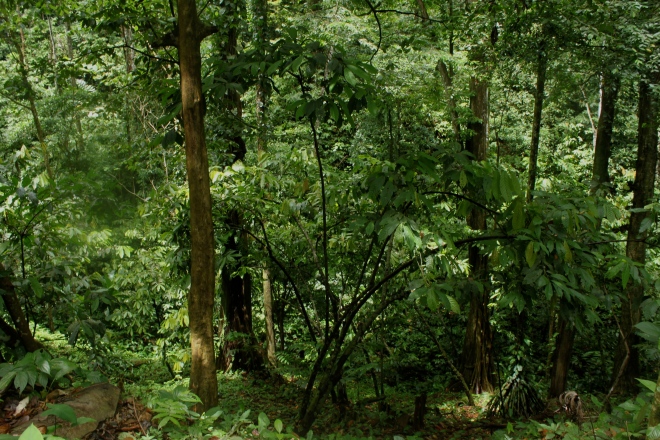
In the forest, the trees are cared for by members of the indigenous tribes here, which use traditional methods taught to them from generation to generation. They have produced cocoa for personal consumption in a drink similar to the xocolatl of the Aztecs since long before the Spanish came. Paul mentioned that he paid their labor as well as their consulting services, resulting in a wage several times higher than the one they asked for originally.

Once the pods are ripe, they are harvested using this instrument…
 and brought to a (very rudimentary) processing unit. Everything begins with opening the pod and extracting the beans…
and brought to a (very rudimentary) processing unit. Everything begins with opening the pod and extracting the beans…
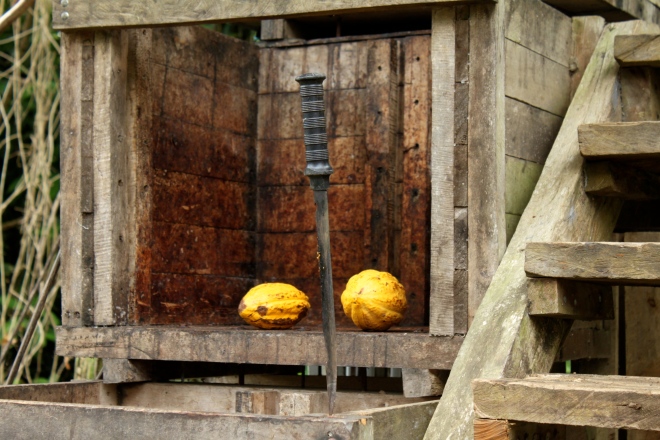
… which are dark purple and intensely bitter, but surrounded by some sweet fruit flesh that makes the cocoa also a valuable fruit for several animals. Paul said that because of their integrated approach, every year they use a significant proportion of their harvest to the animals. On the other hand, the animals also do the job the plant originally produced seeds for, and distribute seeds for new cocoa trees throughout the forest.
The fermented seeds are set out to dry in a tent that has a greenhouse-like effect. At this point, there is no more need to fear animals – they are not interested in the bean. Too bad for them!
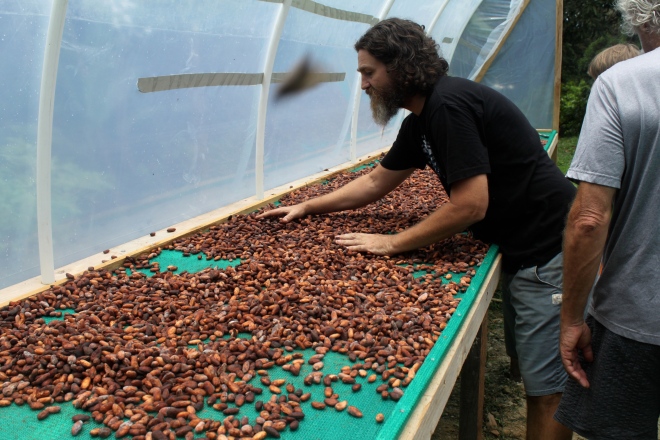
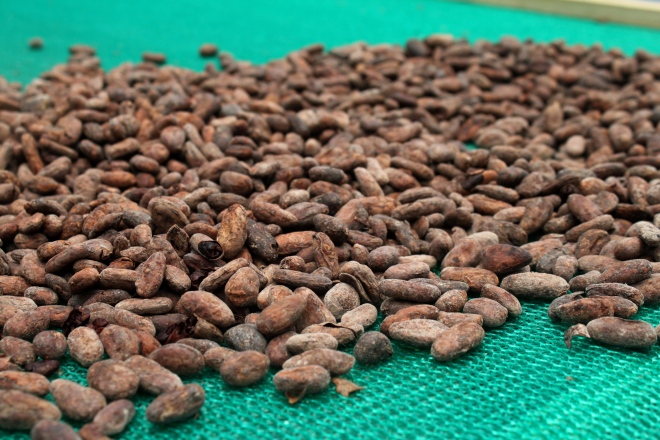
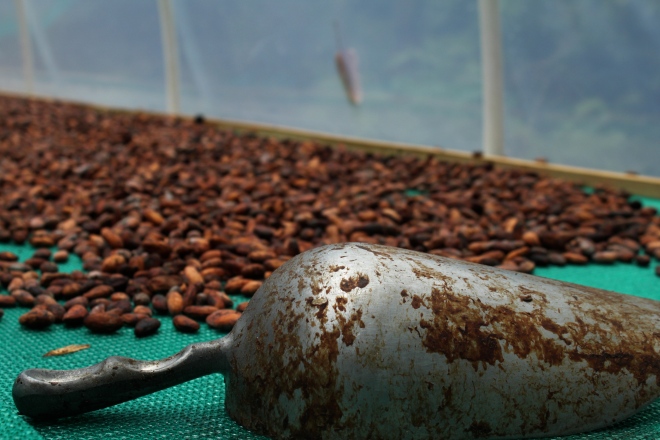 At this point in the tour, we took a break with a view to sample some of Caribeans’ chocolates. It was amazing how despite the same composition (72% dark chocolate, only made up of cocoa beans and sugar) each had a unique flavor profile ranging from nutty to fruity to smokey.
At this point in the tour, we took a break with a view to sample some of Caribeans’ chocolates. It was amazing how despite the same composition (72% dark chocolate, only made up of cocoa beans and sugar) each had a unique flavor profile ranging from nutty to fruity to smokey.
We also tried some of that chocolate drink that was more spicy than sweet and quite an acquired taste for some. I loved it though!
As a last part, we were invited to pair the dark chocolate with some other flavors to create our perfect chocolate: the options ranged from mint or basil to coffee, cinnamon, sea salt all the way to turmeric, chili, garlic and dark pepper. Soon everybody had found their personal favorite. Mine was more on the traditional side with coffee and cinnamon, but there was a brave kid that did garlic everything. Kudos!
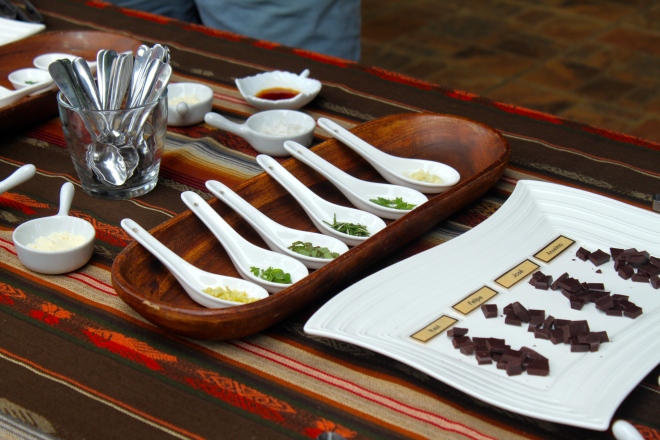
We continued the tour to the chocolate factory itself and on the way casually stumbled upon more wildlife.
There, Paul explained the process: roasting the dried beans, grinding them, removing the shell, and then grinding the pieces up even smaller until you get chocolate liqueur, the pure liquid chocolate. Then you add your desired amount of sugar and put it to set, all the while tempering it to get the best possible texture and ‘snap’.
All in all, it was such a great experience and really insightful to see the challenges and tradeoffs that come with sustainable farming in this context. Paul explained several times that the choices he made had real impacts on his bottom line, and that without the income from the tours and the coffee shop side business it wouldn’t be financially viable. Still, seeing his “farm” set in this lush and vibrant forest made me wish more would be like that. As always, it depends on how much the consumer is willing to pay at the other end.
And with that and a Costa Rican sunset, I close my chocolate tale.
